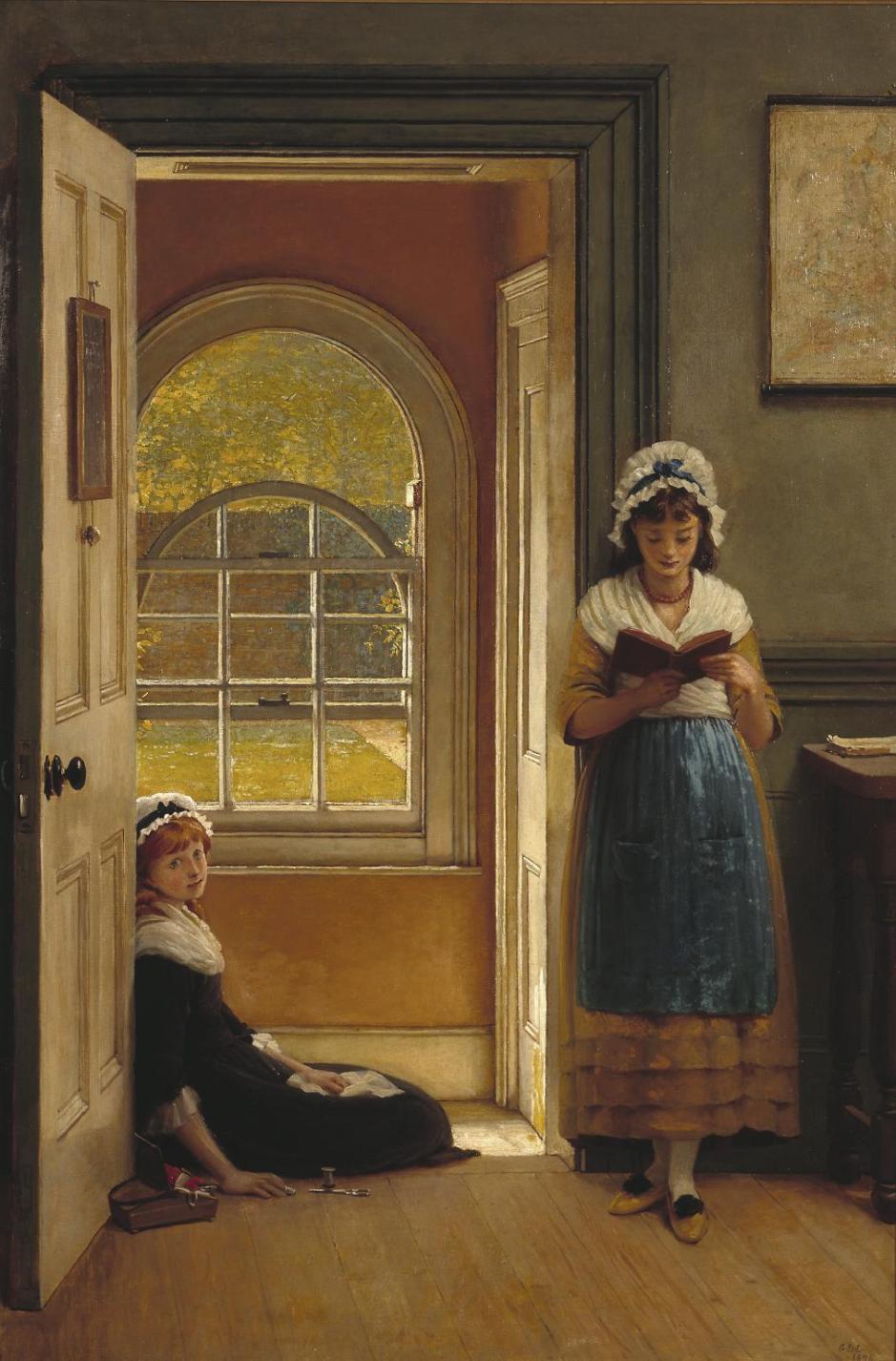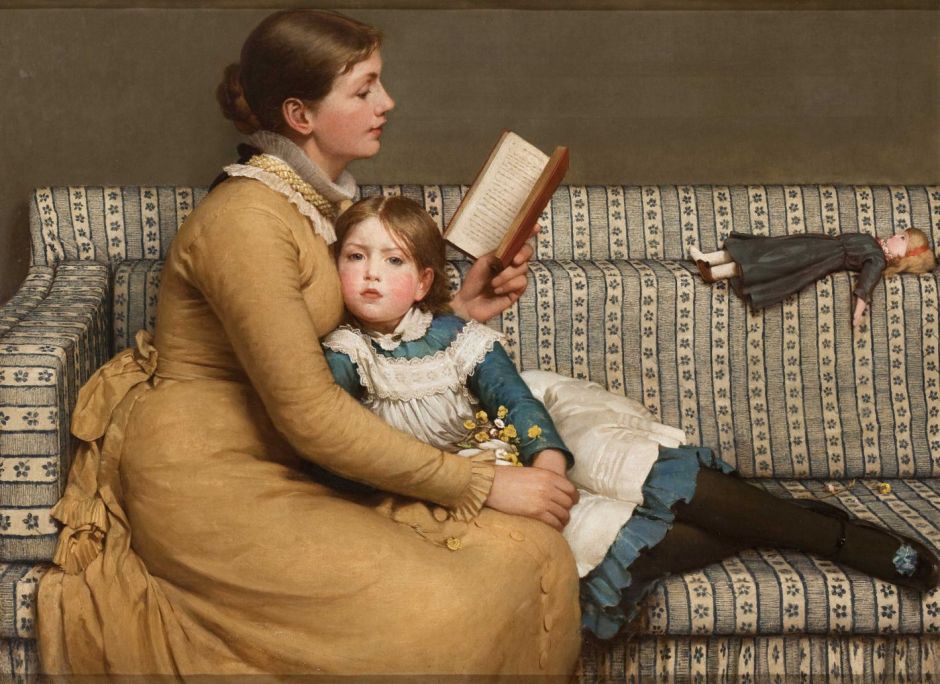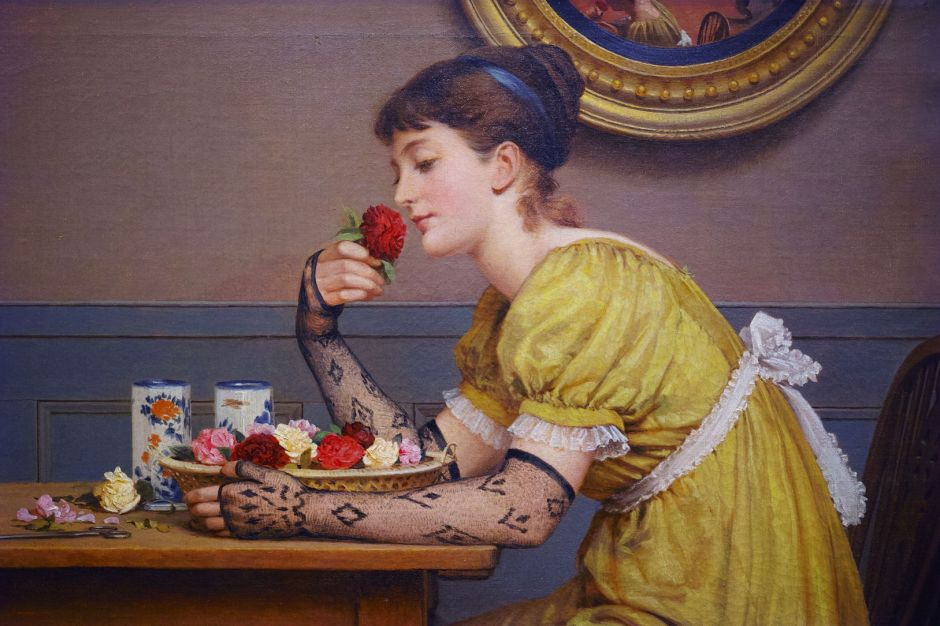At the start of the nineteenth century, Saint John’s Wood, some two and a half miles to the north-west of central London, was still quite rural. By the end of the century, it had grown villas, becoming a prosperous suburb, popular with the upper middle class who worked in the city. It was also notorious for housing the mistresses of many adulterous husbands, and the location for William Holman Hunt’s famous Awakening Conscience (1851-53).
It was just the right place for the Saint John’s Wood Clique, a group of thoroughly Victorian painters, including the narrative artists Philip Hermogenes Calderon, William Frederick Yeames, and George Dunlop Leslie (1835–1921), who died on 21 February 1921, exactly a century ago. Their mainstay, in addition to more memorable narratives, were ‘light genre’ paintings: nothing too heavyweight, but the sort of finely fashioned, almost photographic image of domestic life which brought a smile to the art-lover of the day, and was so readily forgotten in the twentieth century.
Leslie came from an artistic family: his father, uncle, sister and son all painted professionally. He initially trained in a private art school in London before transferring to the Royal Academy Schools at the age of nineteen. That year he exhibited for the first time at the Royal Academy, and continued to do so every year until his retirement. He even published a history of the Royal Academy, to which he was elected an Academician in 1876, when he was only thirty-one.
Initially, Leslie was influenced by the Pre-Raphaelites, and his first successful work revealed a common interest in Dante.

When Dante, Virgil and Statius are ready to enter the Garden of Eden at the summit of the mountain of Purgatory, Dante meets Matelda, a beautiful young woman who is picking flowers, shown in Leslie’s Matilda from 1859.
He exhibited this at the Royal Academy the following year, where it was accompanied not by a quotation from Dante, but a verse from Psalm 92:
“For thou, Lord, hast made me glad through thy work; I will triumph in the works of thy hands”
Leslie’s painting was favourably reviewed, and sold to a prosperous wine-merchant who had a fine collection of contemporary art.

The Nut Brown Maid (c 1874) is a conundrum in that it appears to refer to a popular ballad, first published in 1502, but doesn’t appear to link to its story about the fidelity of women. It shows a servant or poor woman filling two large wooden buckets from a spring. When they’re full, she will carry them away using the yoke she holds under her left arm. In her right hand, she holds a hula hoop. This was exhibited at the Royal Academy in 1874.

Kept in School (1876) shows two girls who have been detained at school after lessons have finished. One stands reading, the other sits working on her embroidery. The blackboard hanging on the door and the map at the upper right give clues to this being a classroom.

Leslie’s Alice in Wonderland from about 1879 is a superb double portrait of mother and daughter, the model for the latter being the artist’s own daughter named Alice. Her mother is shown reading to her, presumably from Lewis Carroll’s Alice’s Adventures in Wonderland, almost universally abbreviated to Alice in Wonderland, which had only been published in 1865. Leslie’s child portraits were praised by the influential critic John Ruskin.

Roses from about 1880 is one of Leslie’s immaculately composed portraits of young women, incorporating modern fashion such as her black lace armlets, Japoniste cups, and aesthetic elements, here the scent of flowers.

In his undated Pot Pourri, two more traditionally dressed young women are using a mortar and pestle to make a highly scented mixture of flower petals, herbs and other aromatic materials, a potpourri. This would have been used to disguise more offensive odours around the house, and appears to have been painted in the summer at Leslie’s house in Wallingford.

Leslie’s undated Feeding the Doves is a plain painting of a young woman feeding seed to pigeons in the autumn.

The Goldfish Seller (undated) shows a hawker trying to sell goldfish to an upper middle class Victorian family. He may have arrived in the horse-drawn cart glimpsed outside the gate, and wears a bowler hat typical of itinerant traders, with a long green smock. The daughter and young son appear particularly unimpressed.
By 1884, Leslie had been sufficiently successful that he was able to move out from Saint John’s Wood to live in the rural village of Wallingford, in Oxfordshire. He moved again on his retirement, to the village of Lindfield in Sussex.

In his later years, Leslie appears to have painted a few landscapes, probably close to his home in Sussex. The Deserted Mill from 1906 is a surprising contrast to his earlier work, although it retains the fine detail seen throughout his paintings, and his reflections are optically faultless.
George Dunlop Leslie died on 21 February 1921, at the age of eighty-five, already long-forgotten as painting fled its past and hurtled into modernism.

